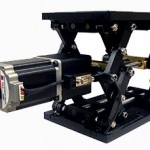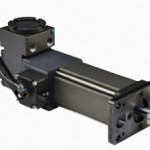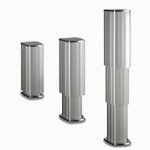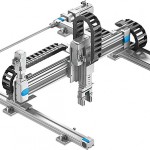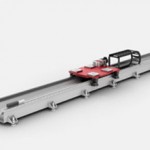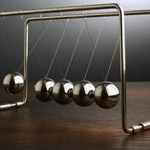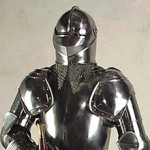The AT10-120 motorized vertical stage from Optimal Engineering Systems, Inc. (OES) is a high resolution, low profile, high load vertical lift stage that can be easily integrated into almost any application. The large 220 x 140 mm (8.7 x 5.5 in.) drilled and tapped platform has a vertical travel of 110 mm (4.3 in.). The […]
Linear Actuator
ATEX rated explosion-proof linear actuators
Curtiss-Wright Corporation has expanded its Exlar® linear actuator line to include the EL120 explosion-proof linear actuators. The EL120 linear actuators meet ATEX requirements for use in potentially explosive atmospheres and are in conformity with the EU ATEX Directive 94/9/EC, as well as the IECEx scheme. Additionally, they are rated for Class I, Div 1, Groups B, […]
New video demonstrates how to synchronize multiple lifting columns
Thomson Industries, Inc., a leading manufacturer of mechanical motion control solutions, has released a new video to demonstrate how design engineers can synchronize multiple Thomson Lifting Columns quickly and easily. The compact design of Thomson Lifting Columns provides a favorable ratio between stroke and retracted length to improve operator ergonomics. Models are designed to handle moment loads […]
When Do You Need a Gantry Robot?
When you think of an industrial robot, what comes to mind? Probably something like this… Articulated robots like these are widely recognized, thanks to car company commercials and robot dance sequences. SCARA (Selective Compliance Articulated Robot Arm) robots are also well-recognized due to their adoption and proliferation in factories since the early 1980’s. Both of these – articulated […]
How to make your linear motion technology easy to maintain
Adding linear motion to articulated robots adds flexibility and extends the work envelope of your system. The 7th axis tracks that enable this linear motion all provide the same functionality but differ in one significant design feature: the antifriction bearing system used to support and guide the tracks. Watch this video to learn how to select the […]
Inertia Matching: Why Perfect Isn’t Always Best
Inertia matching is one of the inexact sciences of motion system design. When a motor and a load are coupled together, the ratio of load inertia to motor inertia determines how well the motor can control the load during acceleration and deceleration. In theory, a “perfect” inertia match of 1:1 (load inertia equals motor inertia) should […]
Five Ways to Make Your Linear System Cleanroom Friendly
Implementing linear motion in a cleanroom presents a particularly difficult challenge, since motion – whether rolling or sliding – necessarily produces particles. But by understanding the sources that contribute to particle generation and implementing smart design options, it is possible to achieve linear motion without compromising even the most stringent cleanroom environments. Below are five ways […]
Linear Motion in the Third Industrial Revolution
According to The Economist magazine, a third revolution is coming for the manufacturing industry, ushered in by 3D printing, new materials, and collaborative manufacturing services. Anyone who has watched the 3D printing industry develop over the past decade, or even the past five years, will likely agree. Gartner forecasts that worldwide shipments of 3D printers […]
Linear Motor vs. Ball Screw
While ironless linear motors have been used in semiconductor and electronic applications for more than a decade, they are still viewed by many designers and OEMs as “niche” products. But the perception of linear motors as a costly solution for unique applications is slowly changing, as more industries are adopting them as replacements for ball screws […]
We’ve Got You Covered: A Quick Guide to Platings and Coatings
Machine builders and end users have many factors to consider when choosing linear motion components and systems – travel length, speed, acceleration, positioning accuracy and repeatability, just to name a few. But sometimes the most challenging requirement isn’t a traditional application spec. It’s the environment that the system will be working in. Many industries have processes […]

